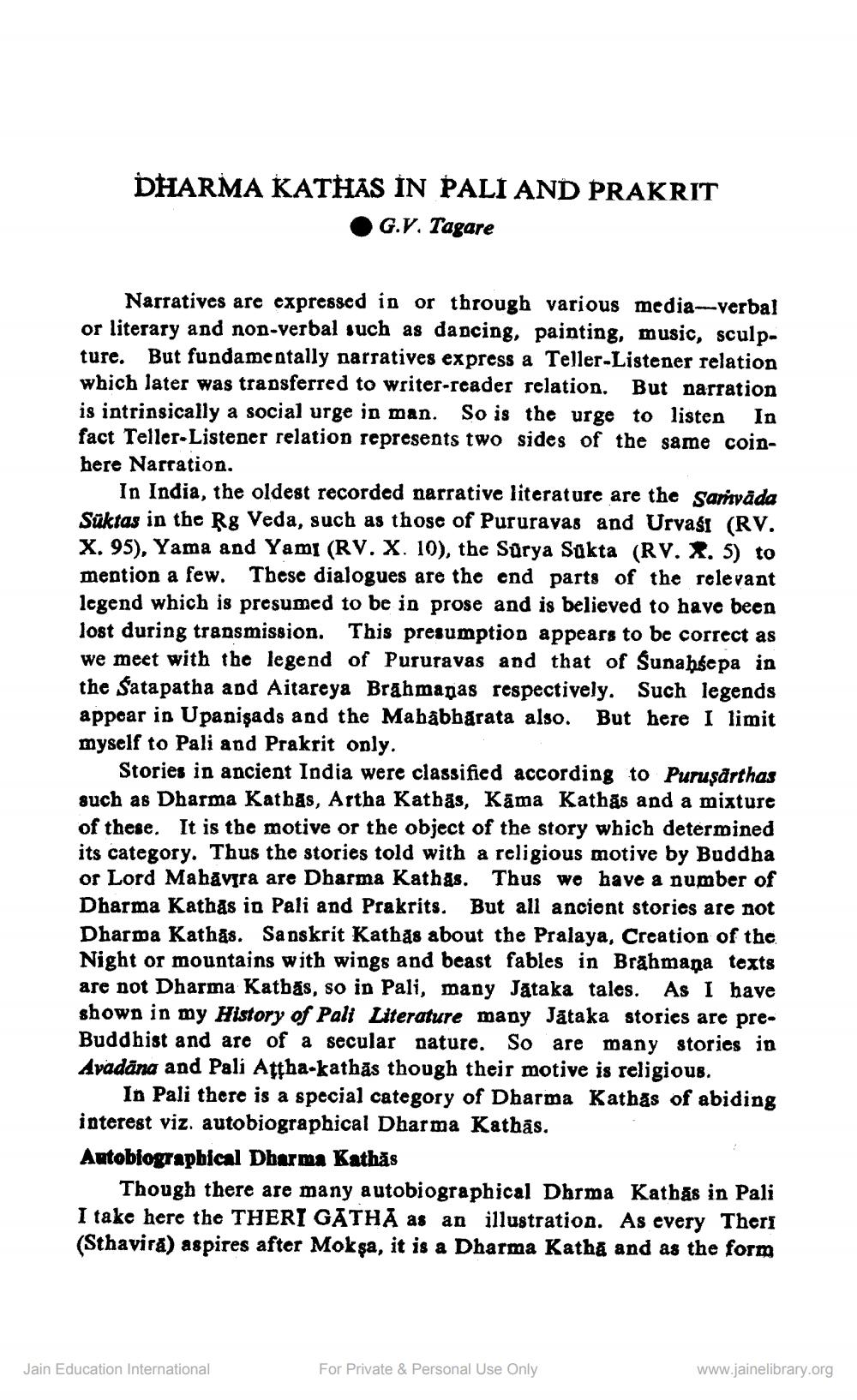________________
DHARMA KATHAS İN PALI AND PRAKRIT
G.V. Tagare
Narratives are expressed in or through various media-verbal or literary and non-verbal such as dancing, painting, music, sculpture. But fundamentally narratives express a Teller-Listener relation which later was transferred to writer-reader relation. But narration is intrinsically a social urge in man. So is the urge to listen In fact Teller-Listener relation represents two sides of the same coinhere Narration.
In India, the oldest recorded narrative literature are the Sarrada Süktas in the R8 Veda, such as those of Pururayas and Urvasi (RV. X. 95), Yama and Yami (RV. X. 10), the Sürya Sakta (RV. X. 5) to mention a few. These dialogues are the end parts of the relevant legend which is presumed to be in prose and is believed to have been lost during transmission. This presumption appears to be correct as we meet with the legend of Pururavas and that of Sunahsepa in the Satapatha and Aitareya Brahmapas respectively. Such legends appear in Upanişads and the Mababharata also. But here I limit myself to Pali and Prakrit only.
Stories in ancient India were classified according to Purusårthas such as Dharma Kathas, Artha Kathas, Kāma Kathas and a mixture of these. It is the motive or the object of the story which determined its category. Thus the stories told with a religious motive by Buddha or Lord Mahavira are Dharma Kathas. Thus we have a number of Dharma Kathas in Pali and Prakrits. But all ancient stories are not Dharma Kathas. Sanskrit Kathas about the Pralaya, Creation of the Night or mountains with wings and beast fables in Brahmana texts are not Dharma Katbás, so in Pali, many Jataka tales. As I have shown in my History of Pali Literature many Jataka stories are preBuddhist and are of a secular nature. So are many stories in Avadana and Pali Attha-kathās though their motive is religious.
In Pali there is a special category of Dharma Kathas of abiding interest viz. autobiographical Dharma Kathās. Autobiographical Dharma Kathās
Though there are many autobiographical Durma Kathās in Pali I take here the THERI GATH) as an illustration. As every Theri (Sthavira) aspires after Moksa, it is a Dharma Katha and as the form
Jain Education International
For Private & Personal Use Only
www.jainelibrary.org




